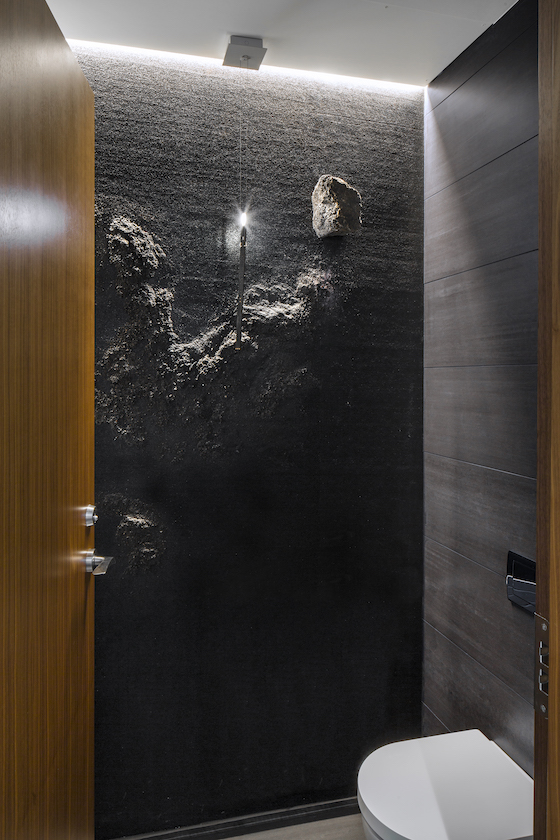“In our process more we like to peel it back, to find out what we don’t need, and use less in materials,” says Tryggvi Thorsteinsson, co-founder of Minarc, an architecture and design firm based in Santa Monica, California, that focuses on sustainable materials and design. “Build the walls out of materials that we can leave and use. Don’t use paint if you don’t need to use paint.”

He and his wife, company co-founder Erla Dögg Ingjaldsdóttir, took that approach at the Ion Adventure Hotel. “Concrete is the easiest material to find in Iceland, and the hotel is located in a really rural area in a national park, and we had to do this really simply and by disturbing nature as little as possible,” he says.
The bathroom at the Ion City Hotel in Reykavik uses black volcanic sand, a local and evocative natural touch. “We try to eliminate layers, which makes it less expensive, but that means that you have to do the first layer better,” Ingjaldsdóttir says.
Getting ‘future-facing’ on sustainable design
Siobhan O’Neill, co-editor of Green Hotelier, offers questions to help hoteliers get “future-facing” on design and energy use:
WATER: Is the approach to managing water responsible and sensible for where the hotel is in the world (and do you really need three infinity pools)? Build a strong water stewardship policy – and understand how it will impact the community.
CONSTRUCTION: What’s the best way to work with local weather patterns and find ways to benefit from natural shade and cross-ventilation that will minimize the need for air conditioning?
ENERGY: What renewable energy is available that makes sense for the hotel’s location and that uses the least power possible?
Fast facts
According to the 2017 Green Lodging Trends Report, with data for 2,093 hotels in 46 countries (most in Asia Pacific and mostly full-service):
68% benchmark energy performance against peer properties in their portfolio
41% measure carbon footprint
7% purchase carbon offsets or renewable energy certificates
76% train staff at least annually on green practices
